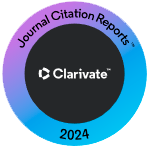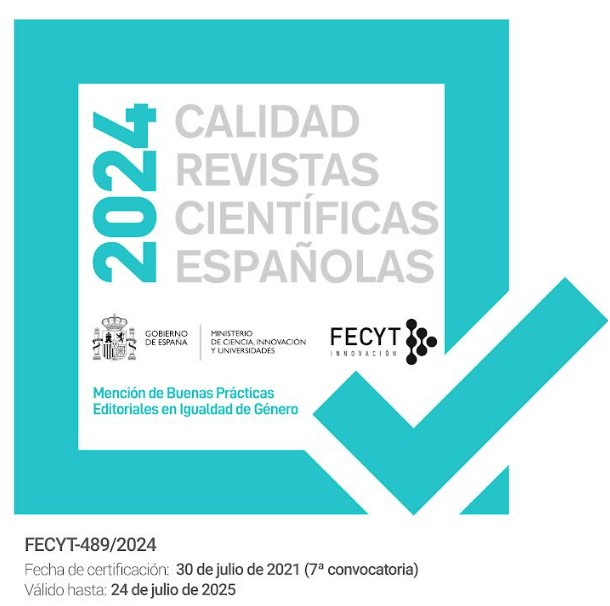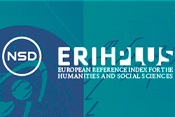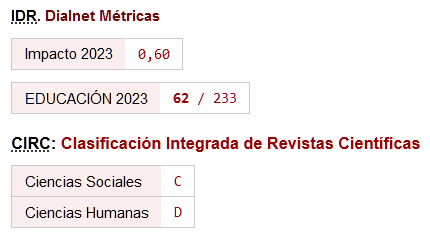Perceived Stress Due COVID-19 Pandemic Among Employed Professional Teachers
DOI:
https://doi.org/10.46661/ijeri.5284Keywords:
COVID-19, mental health, pandemic, stress, teachersAbstract
The unexpected occurrence of the COVID-19 outbreak has undeniably disrupted the normalcy of life. Stress has become an important concern in education since the COVID-19 outbreak. This descriptive-correlational online survey administered in August 2020 utilized the COVID-19 Perceived Stress Scale (COVID-19 PSS-10) to assess the COVID-19 perceived stress among employed Filipino teachers. Whitney U and Kruskal–Wallis tested for differences while Spearman’s rho was used to analyze correlation between variables. Results demonstrated that more than half of teachers experienced moderate COVID-19 stress. Females experienced significantly higher COVID-19 stress compared to males. A negative correlation was noted between self-rated health and COVID-19 stress while a positive correlation was found between perceive risk of getting COVID-19 infection and COVID-19 stress. This study highlights that steps must be undertaken to help teachers deal with the stress of the COVID-19 crisis as well as they must be provided or taught with stress management interventions during this pandemic. This study could be used as a baseline for future research to assess the impact of COVID-19 stress among professional teachers.
Downloads
References
Abdulah, D. M., y Mohammed, A. A. (2020). The consequences of the COVID-19 pandemic on perceived stress in clinical practice: Experience of doctors in Iraqi Kurdistan. Romanian Journal of Internal Medicine, 1. https://doi.org/10.2478/rjim-2020-0020
Agai–Demjaha, T., Bislimovska, J. K., y Mijakoski, D. (2015). Level of work related stress among teachers in elementary schools. Macedonian Journal of Medical Sciences, 3(3), 484-488. http://dx.doi.org/10.3889/oamjms.2015.076
AlAteeq, D. A., Aljhani, S., y AlEesa, D. (2020). Perceived stress among students in virtual classrooms during the COVID-19 outbreak in KSA. Journal of Taibah University Medical Sciences, 15(5), 398-403. https://doi.org/10.1016/j.jtumed.2020.07.004
Alson, J. (2019). Stress among public school teachers. Journal of Research Initiatives, 4(2), 1-5. Retrieved from: https://digitalcommons.uncfsu.edu/jri/vol4/iss2/3
Alves, R., Lopes, T., y Precioso, J. (2020). Teachers' well-being in times of Covid-19 pandemic: Factors that explain professional well-being. International Journal of Educational Research and Innovation, 15, 203-217. Retrieved from: https://doi.org/10.46661/ijeri.5120
Campo-Arias, A., Perdomo-Rojas, J. A., y Caballero-Domínguez, C. C. (2020). Social capital and perceived stress related to coronavirus disease in Colombia. Journal of Epidemiology & Community Health, 74(10), 872. http://dx.doi.org/10.1136/jech-2020-215005
Centers for Disease Control and Prevention. (2020a). Coronavirus disease 2019 (COVID-19). Retrieved from: https://www.cdc.gov/coronavirus/2019-ncov/need-extra-precautions/older-adults.html
Centers for Disease Control and Prevention (2020b). Coronavirus disease 2019 (COVID-19). Retrieved from: https://www.cdc.gov/coronavirus/2019-ncov/need-extra-precautions/people-with-medical-conditions.html
Center for Strategic and International Studies. (2020b). Southeast Asia covid-19 tracker. Retrieved from: https://www.csis.org/programs/southeast-asia-program/southeast-asia-covid-19-tracker-0
Di Fronso, S., Costa, S., Montesano, C., Di Gruttola, F., Ciofi, E. G., Morgilli, L., Robazza, C., y Bertollo, M. (2020). The effects of COVID-19 pandemic on perceived stress and psychobiosocial states in Italian athletes. International Journal of Sport and Exercise Psychology, 1-13. https://doi.org/10.1080/1612197X.2020.1802612
Ganzach, Y., Ellis, S., Pazy, A., y Ricci-Siag, T. (2008). On the perception and operationalization of risk perception. Judgment and Decision Making, 3(4), 317-324. Retrieved from: https://psycnet.apa.org/record/2008-05834-003
Garcia, L. L., Castillo, J. M., Bejoc, J., Redula, E. H., Lapa, M. M. I., y Palompon, D. (2020). Understanding COVID-19 dispersion in the Filipino sociocultural context. Asia Pacific Journal of Health Management, 15(3), 13-17. https://doi.org/10.24083/apjhm.v15i3.467
Guillasper, J. N., Soriano, G. P., y Oducado, R. M. F. (2020). Psychometric properties of ‘attitude towards e-learning scale’ among nursing students. International Journal of Educational Sciences, 30, (1-3), 1-5. https://doi.org/10.31901/24566322.2020/30.1-3.1135
Haddock, C. K., Poston, W. S., Pyle, S. A., Klesges, R. C., Vander Weg, M. W., Peterson, A., y Debon, M. (2006). The validity of self-rated health as a measure of health status among young military personnel: Evidence from a cross-sectional survey. Health and Quality of Life Outcomes, 4(1), 57. https://doi.org/10.1186/1477-7525-4-57
Kabito, G. G., y Wami, S. D. (2020). Perceived work-related stress and its associated factors among public secondary school teachers in Gondar city: A cross-sectional study from Ethiopia. BMC Research Notes, 13(1), 1-7. https://doi.org/10.1186/s13104-020-4901-0
Lam, S. C., Arora, T., Grey, I., Suen, L. K. P., Huang, E. Y. Z., Li, D., y Lam, K. B. H. (2020). Perceived risk and protection from infection and depressive symptoms among healthcare workers in mainland China and Hong Kong during COVID-19. Frontiers in Psychiatry, 11, 686. https://doi.org/10.3389/fpsyt.2020.00686
Limcaoco, R. S. G., Mateos, E. M., Fernandez, J. M., y Roncero, C. (2020). Anxiety, worry and perceived stress in the world due to the COVID-19 pandemic, March 2020. Preliminary results. medRxiv. https://doi.org/10.1101/2020.04.03.20043992
Liu, S., Lithopoulos, A., Zhang, C. Q., Garcia-Barrera, M. A., y Rhodes, R. E. (2020). Personality and perceived stress during COVID-19 pandemic: Testing the mediating role of perceived threat and efficacy. Personality and Individual Differences, 168, 110351. https://doi.org/10.1016/j.paid.2020.110351
Lorem, G., Cook, S., Leon, D. A., Emaus, N., y Schirmer, H. (2020). Self-reported health as a predictor of mortality: A cohort study of its relation to other health measurements and observation time. Scientific Reports, 10(1), 1-9. https://doi.org/10.1038/s41598-020-61603-0
Mariotti, A. (2015). The effects of chronic stress on health: New insights into the molecular mechanisms of brain–body communication. Future Science, 1(3). https://doi.org/10.4155/fso.15.21
Mirón, J., Goldberg, X., López-Sola, C., Nadal, R., y Armario, A. (2019). Perceived stress, anxiety and depression among undergraduate students: An online survey study. Journal of Depression & Anxiety, 8(1), 1-5. https://doi.org/10.4172/2167-1044.1000330
Mondol, M.S., y Mohiuddin, M.G. (2020). Confronting COVID-19 with a paradigm shift in teaching and learning: A study on online classes. International Journal of Social, Political and Economic Research, 7(2), 231-247. https://doi.org/10.46291/IJOSPERvol7iss2pp231-247
Moralista, R. B., y Oducado, R. M. F. (2020). Faculty perception toward online education in a state college in the Philippines during the coronavirus disease 19 (COVID-19) pandemic. Universal Journal of Educational Research, 8(10), 4736-4742. https://doi.org/10.13189/ujer.2020.081044
Nanjundaswamy, M. H., Pathak, H., y Chaturvedi, S. K. (2020). Perceived stress and anxiety during COVID-19 among psychiatry trainees. Asian Journal of Psychiatry, 54, 102282. https://doi.org/10.1016/j.ajp.2020.102282
Nulty, D.D. (2008). The adequacy of response rates to online and paper surveys: What can be done?. Assessment & Evaluation in Higher Education, 33(3), 301-314. https://doi.org/10.1080/02602930701293231
Pagayanan, R. (2016). Stress profile of public elementary school teachers in Tacloban city division: Inputs for a proposed classroom intervention program. In International Conference on Research in Social Sciences, Humanities and Education, May 20-21, 2016 Cebu (Philippines), 126-129. Retrieved from: http://uruae.org/siteadmin/upload/UH0516121.pdf
Pedrozo-Pupo, J. C., Pedrozo-Cortés, M. J., y Campo-Arias, A. (2020). Perceived stress associated with COVID-19 epidemic in Colombia: An online survey. Cadernos de Saúde Pública, 36, e00090520. https://doi.org/10.1590/0102-311x00090520
Philippine Department of Health. (2020). COVID-19 case bulletin #182. Retrieved from: https://www.doh.gov.ph/covid-19/case-tracker
Priya, K. B., Rajendran, P., Kumar, S., Prabhu, J., Rajendran, S., Kumar, P. J., Thanapal P., Jabez, C., y Jothikumar, R. (2020). Pediatric and geriatric immunity network mobile computational model for COVID-19. International Journal of Pervasive Computing and Communications, 16(4), 321-330. https://doi.org/10.1108/IJPCC-06-2020-0054
Qiu, J., Shen, B., Zhao, M., Wang, Z., Xie, B., y Xu, Y. (2020). A nationwide survey of psychological distress among Chinese people in the COVID-19 epidemic: Implications and policy recommendations. General Psychiatry, 33(2), e100213. http://dx.doi.org/10.1136/gpsych-2020-100213
Reimer, F. M., y Schleicher, A. (2020). Schooling disrupted, schooling rethought: How the COVID-19 pandemic is changing education. Retrieved from: https://globaled.gse.harvard.edu/files/geii/files/education_continuity_v3.pdf
Tan, J. S. T. (2017). Factors affecting stress among faculty members of public universities in the Philippines: A multiple regression analysis. International Journal of Psychological Studies, 9(3), 64-78. http://doi.org/10.5539/ijps.v9n3p64
Teh, H. C., Archer, J. A., Chang, W., y Chen, S. A. (2015). Mental well‐being mediates the relationship between perceived stress and perceived health. Stress and Health, 31(1), 71-77. https://doi.org/10.1002/smi.2510
Wu, S., Wang, R., Zhao, Y., Ma, X., Wu, M., Yan, X., y He, J. (2013). The relationship between self-rated health and objective health status: A population-based study. BMC Public Health, 13(1), 320. https://doi.org/10.1186/1471-2458-13-320
Yıldırım, M., y Güler, A. (2021). Positivity explains how COVID-19 perceived risk increases death distress and reduces happiness. Personality and Individual Differences, 168, 110347. https://doi.org/10.1016/j.paid.2020.110347
Younas, S., Tahir, F., Sabih, F., Hussain, R., Hassan, A., Sohail, M., Hafa, S. Z. N., Munawar, A., Kanwal, R., Tanvir, M. y Zahra, M. (2020). Psychological capital and mental health: Empirical exploration in perspective of gender. Ponte Academic Journal, 76(1), 150-175. https://doi.org/10.21506/j.ponte.2020.1.11
Yulitasari, B. I., Amatayakul, A., y Karuncharerernpanit, S. (2015). The relationship between perceived health status, activity of daily living, coping strategies, religiosity, and stress in the elderly at a public nursing home in Yogyakarta, Indonesia. Journal of Health Research, 29(Suppl. 1), S97-S101. Retrieved from: https://he01.tci-thaijo.org/index.php/jhealthres/article/view/79900
Zandifar, A., y Badrfam, R. (2020). Iranian mental health during the COVID-19 epidemic. Asian Journal of Psychiatry, 51, 101990. https://doi.org/10.1016/j.ajp.2020.101990
Zhang, J., Wu, W., Zhao, X., y Zhang, W. (2020). Recommended psychological crisis intervention response to the 2019 novel coronavirus pneumonia outbreak in China: A model of West China Hospital. Precision Clinical Medicine, 3(1), 3-8. https://doi.org/10.1093/pcmedi/pbaa006
World Health Organization. (2020a). Mental health and psychosocial considerations during the COVID-19 outbreak (No. WHO/2019-nCoV/MentalHealth/2020.1). Retrieved from: https://apps.who.int/iris/handle/10665/331490
World Health Organization. (2020b). WHO coronavirus disease (COVID-19) dashboard. Retrieved from:
Downloads
Published
How to Cite
Issue
Section
License
Copyright (c) 2020 Ryan Michael Oducado, Judith Rabacal, Rome Moralista, Khen Tamdang

This work is licensed under a Creative Commons Attribution-NonCommercial-NoDerivatives 4.0 International License.












